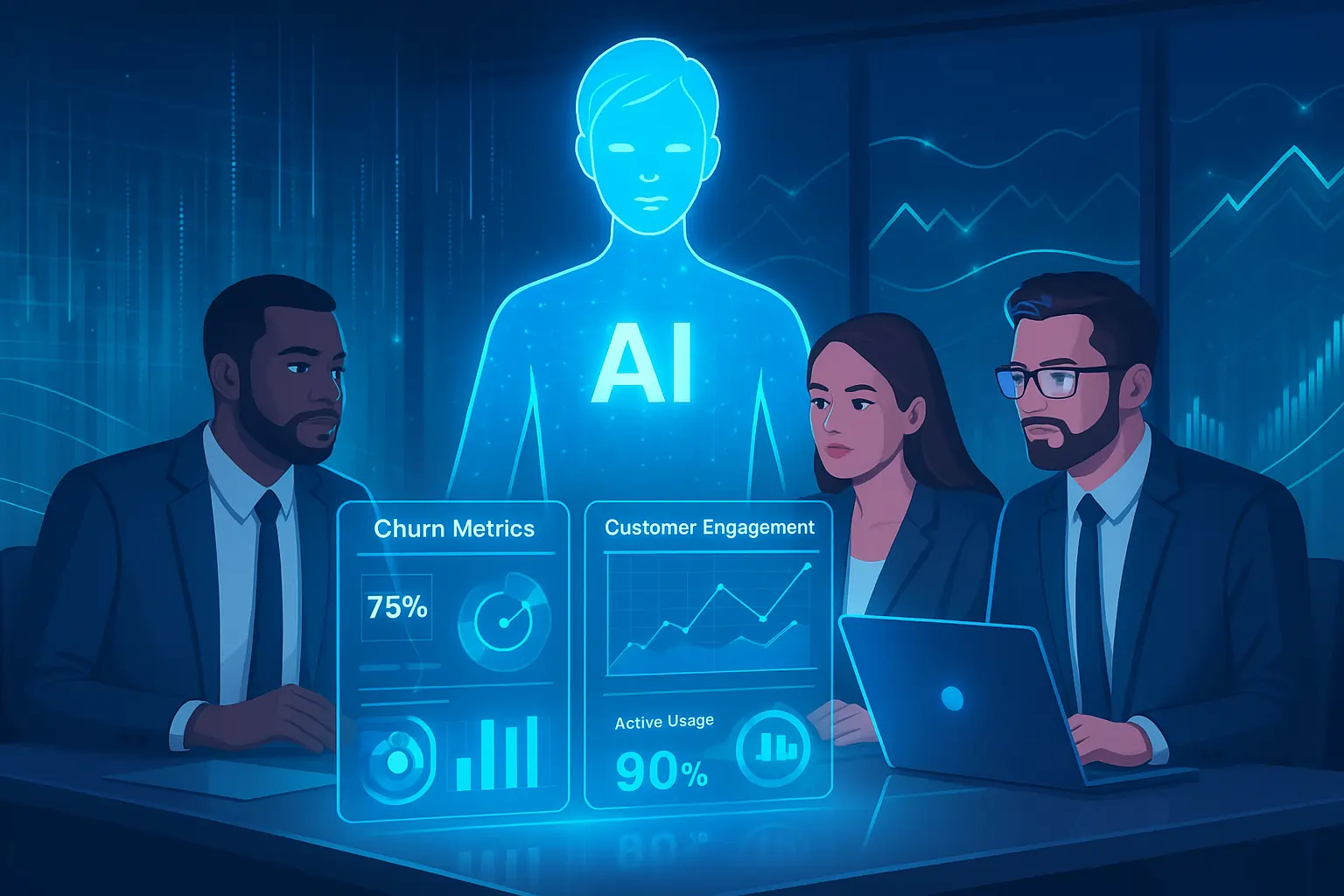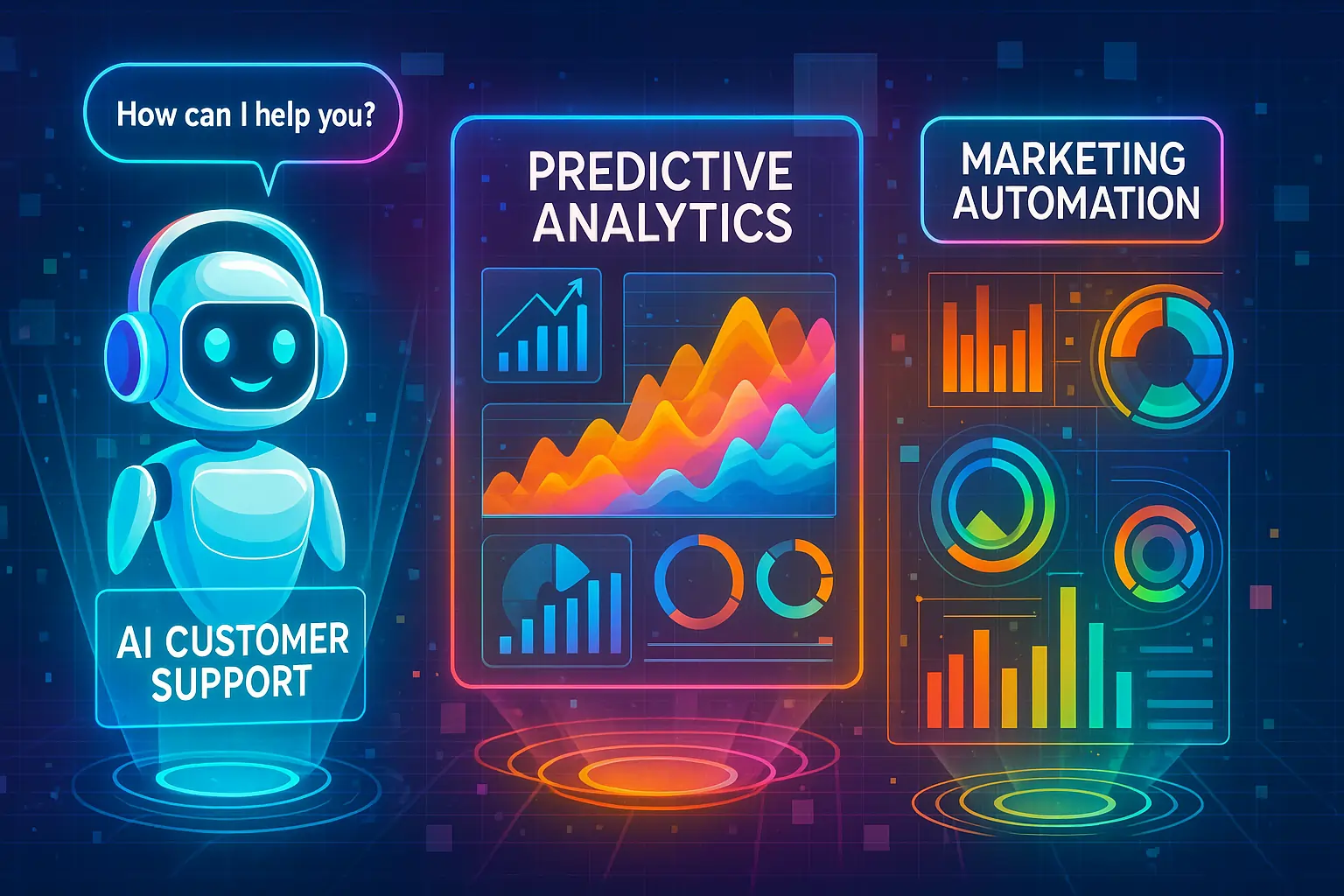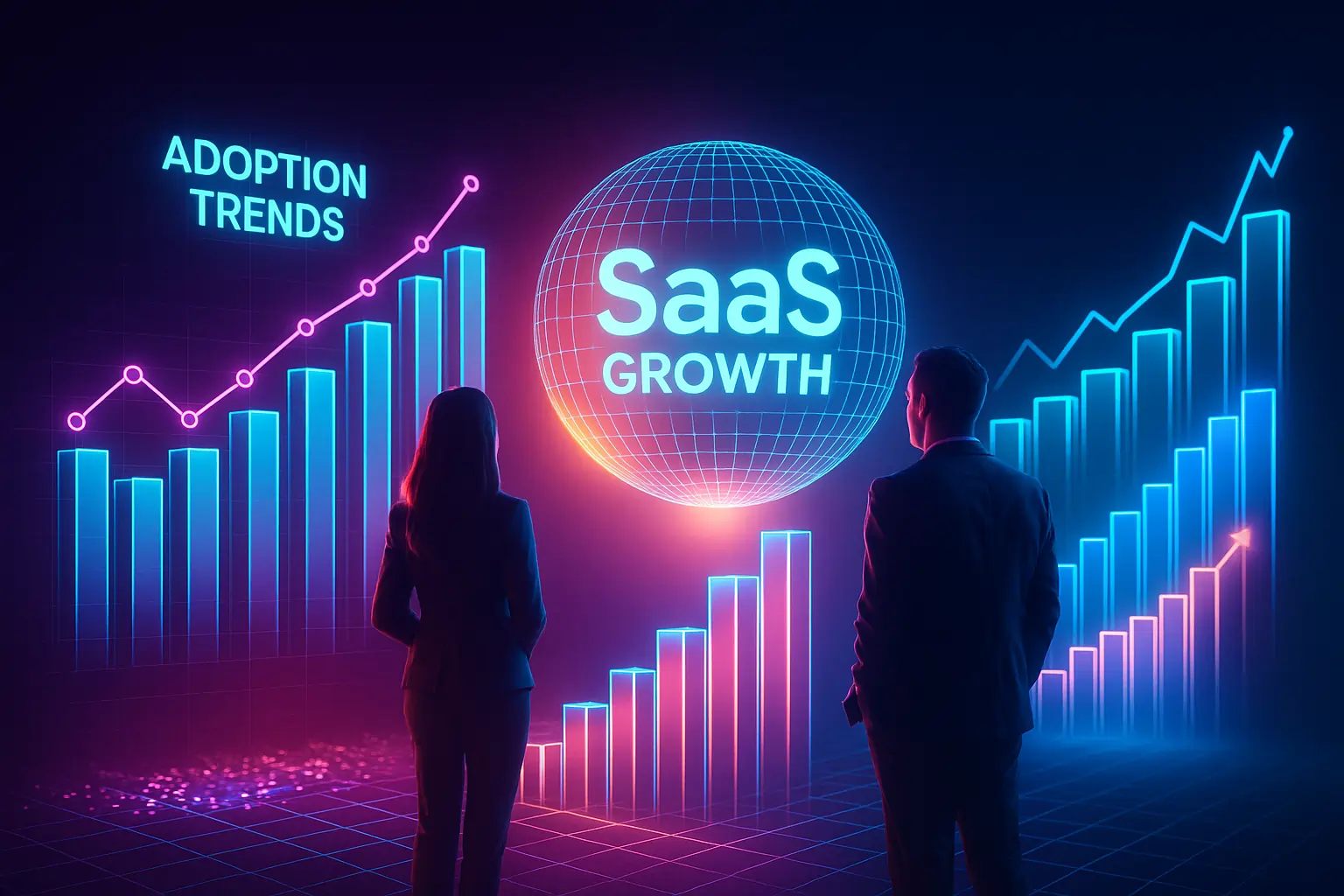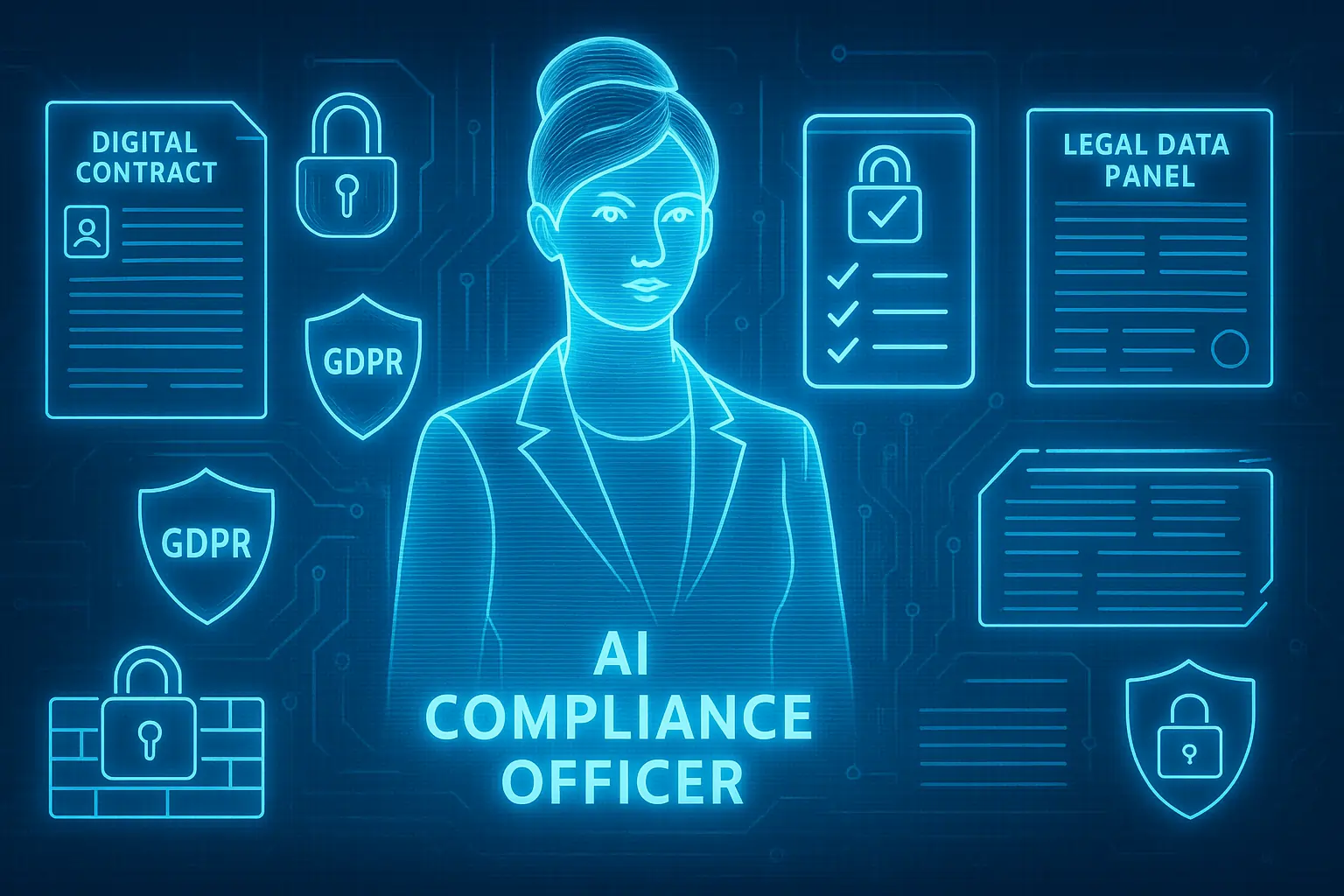AI solutions for SaaS providers encompass everything from chatbots and analytics platforms to large language models that transform customer support, marketing automation, and data visualization.
These technologies aren’t just nice features anymore, they’re competitive necessities that determine whether your platform thrives or becomes obsolete.
The landscape has shifted dramatically. While traditional SaaS companies focused on features and integrations, today’s successful platforms weave artificial intelligence into their core architecture.
This isn’t about adding a chatbot to your support page; it’s about fundamentally reimagining how software serves users.
What Are AI Solutions for SaaS Providers?
AI solutions for SaaS represent the integration of machine learning, natural language processing, and automation technologies directly into software platforms to enhance user experience, operational efficiency, and business intelligence.
Think of it as the difference between a static tool and an intelligent partner. Traditional SaaS tools require users to learn complex interfaces and manual processes.
AI-enabled SaaS platforms anticipate needs, automate routine tasks, and provide insights without being asked.

AI-native SaaS platforms are built from the ground up with artificial intelligence as their foundation, such as Jasper for content generation or Copy.ai for marketing automation.
AI-enabled SaaS platforms are existing solutions that have integrated AI features, such as Salesforce Einstein or HubSpot’s AI tools.
The distinction matters because AI-native platforms often provide more seamless, intuitive experiences, while AI-enabled platforms may feel like traditional software with innovative features bolted on.
Why Do SaaS Providers Need AI Today?

Modern SaaS customers expect personalisation, instant responses, and proactive insights that overwhelm traditional customer support and analytics approaches. Without AI, you’re essentially bringing a calculator to a smartphone competition.
Customer churn rates in SaaS have reached alarming levels, with some industries seeing annual churn rates exceeding 20%. AI solutions directly address this by enabling predictive analytics that identify at-risk customers,
personalised onboarding sequences that improve user adoption, and intelligent support systems that resolve issues before they escalate.
Multi-tenant architecture, the backbone of SaaS, actually provides unique advantages for AI implementation. Your platform can learn from patterns across all users while maintaining data isolation, creating more innovative algorithms without compromising privacy.
This collective intelligence becomes a competitive moat that single-tenant solutions can’t replicate. B2B SaaS AI Startup Investment criteria now emphasize AI adoption as a core growth factor.
Which AI SaaS Tools and Platforms Solve the Biggest Challenges?

SaaS AI Tools for Customer Support
Conversational AI platforms like Intercom’s Resolution Bot and Zendesk’s Answer Bot handle 80% of routine inquiries without human intervention. These aren’t basic chatbots; they understand context, remember conversation history, and escalate complex issues seamlessly.
Advanced implementations use agentic AI that can actually perform actions: updating account settings, processing refunds, or scheduling follow-ups. This transforms support from reactive firefighting to proactive customer success.
AI SaaS Platforms for Analytics & Data Visualization
Traditional business intelligence tools show you what happened. AI-powered analytics platforms like Tableau’s Einstein Analytics and Microsoft’s Power BI AI features explain why it happened and predict what’s coming next.
These systems identify patterns humans miss: seasonal usage fluctuations, feature adoption correlations, and early warning signs of churn.
They transform data from historical records into actionable intelligence. AI-Powered Data Visualization SaaS platforms are revolutionizing how companies interpret complex datasets.
AI SaaS Products for Marketing Automation
Platforms like HubSpot’s AI tools and Salesforce Marketing Cloud use machine learning to optimise email timing, personalise content recommendations, and score leads with unprecedented accuracy.
They don’t just automate tasks; they make more intelligent decisions about which tasks to automate.
How Can SaaS Automation Make AI Workflows Effortless?
SaaS automation takes the messy, repetitive tasks off your plate, like model switching, monitoring, or routing prompts, so you can focus on scaling your product. Think of it as your backstage crew keeping the AI performance running smoothly.
Automation in SaaS isn’t just about saving a few hours; it’s about creating a system that scales without constant firefighting. Imagine setting up rules that automatically route routine queries to cheaper models, while reserving the heavy lifting for premium LLMs.
With the right automation, you get:
-
Smarter resource allocation – no wasted compute cycles.
-
Real-time monitoring – flag token overages or latency issues before they impact the user experience.
-
Adaptive workflows – update prompts or model selection automatically as conditions change.
In short, automation lets you step back from micromanaging AI and focus on growth. And when integrated with SaaS workflows, it becomes your silent partner in scaling smarter, not harder.
How Can SaaS Providers Integrate LLMs Effectively?
Large language models offer three primary integration approaches, each suited for different use cases and technical capabilities.

Retrieval Augmented Generation (RAG) connects LLMs to your knowledge base, creating AI assistants that can answer specific questions about your product, policies, or procedures. This approach works brilliantly for customer support and internal documentation systems without requiring expensive model training.
Fine-tuning adapts pre-trained models to your specific domain and communication style. If your SaaS serves legal professionals, for instance, fine-tuning ensures your AI speaks their language and understands industry nuances.
Agentic AI workflows represent the cutting-edge autonomous systems that can reason through complex tasks, make decisions, and take actions across multiple systems. Imagine an AI that monitors your platform health, identifies performance issues, and automatically scales resources while notifying relevant team members.
The decision tree is straightforward: Start with RAG for knowledge-based tasks, consider fine-tuning for domain-specific applications, and explore agentic approaches for complex automation workflows.
When SaaS providers choose vendor LLMs versus building in-house capabilities, White-Label AI SaaS solutions often provide faster time-to-market.
What Are the Adoption Trends in B2B SaaS Companies?

Recent surveys from McKinsey indicate that 73% of B2B SaaS companies plan to integrate AI capabilities within the next 18 months, but only 31% have successfully deployed production-ready AI features.
Early adopters typically start with customer-facing applications, chatbots, recommendation engines, and predictive analytics. They report average customer satisfaction increases of 15-25% and a 30-40% reduction in support tickets.
Common challenges include data quality issues, integration complexity, and user resistance to adoption. Companies that succeed focus on solving specific, measurable problems rather than pursuing AI for its own sake.
ROI timelines vary significantly: Simple implementations, such as chatbots, show returns within 3-6 months, while comprehensive AI transformations require 12-18 months to demonstrate full value.
What Risks & Compliance Factors Should SaaS Providers Consider?
AI implementation introduces new compliance, security, and operational risks that traditional software development rarely encounters.

Data privacy regulations like GDPR and HIPAA require explicit consent for AI processing, algorithmic transparency, and the ability to explain automated decisions. Your AI can’t be a black box if you’re handling European customer data.
Bias mitigation becomes critical when AI makes decisions affecting user experience or business outcomes. Regular audits, diverse training data, and human oversight mechanisms are essential safeguards.
Security vulnerabilities include prompt injection attacks, model poisoning, and data leakage through AI responses. According to OWASP’s AI Security Guide, implementing proper input sanitization, output filtering, and access controls prevents most threats.
Create a compliance checklist covering: data governance policies, algorithmic auditing procedures, user consent mechanisms, and incident response plans for AI-related security breaches.
Which Vendors and Startups Lead in AI SaaS Solutions?
Top AI SaaS Companies
Enterprise leaders include Salesforce (Einstein), Microsoft (Copilot suite), and Google (Vertex AI), offering comprehensive platforms with extensive integration capabilities and enterprise-grade security.
AI SaaS Startups to Watch
Emerging challengers like Anthropic (Claude), OpenAI (GPT-4), and specialised providers like Jasper and Copy.ai focus on specific use cases with superior user experiences and faster innovation cycles.
AI SaaS Vendor Company Names
Startup innovators are creating niche solutions: Gong for sales intelligence, Observe.ai for contact centre optimisation, and DataRobot for automated machine learning.
The vendor landscape remains fragmented, with no single provider dominating all use cases. Success often requires a multi-vendor strategy combining best-of-breed solutions.
How Much Do AI SaaS Solutions Cost?
AI SaaS pricing typically follows usage-based models rather than traditional seat-based subscriptions, reflecting the variable costs of computational resources and API calls.
Token-based pricing charges for actual AI processing, making costs predictable for specific use cases but potentially expensive for high-volume applications. Understanding your expected token consumption is crucial for budgeting.
Hybrid models combine base subscriptions with usage overages, providing predictable core costs while scaling with demand. This approach works well for growing companies with fluctuating AI usage patterns.
Freemium tiers allow experimentation and proof-of-concept development but typically include significant limitations on features, usage volume, or support quality.
What Emerging Trends Will Shape AI SaaS in 2025 and Beyond?

Agentic AI transformation will move beyond simple automation to create autonomous software agents that can reason, plan, and execute complex workflows across multiple systems and timeframes.
No-code AI builders will democratize AI implementation, allowing non-technical users to create sophisticated automation and intelligence features without writing code or managing infrastructure.
Sustainability concerns around AI energy consumption will drive demand for efficient models and green AI solutions, particularly among environmentally conscious enterprises.
The companies that survive and thrive will be those that view AI not as a feature to add, but as a fundamental capability that transforms how software serves users.
FAQs
What are AI solutions for SaaS providers?
AI solutions include chatbots, predictive analytics, recommendation engines, and automation tools integrated directly into SaaS platforms to enhance user experience and operational efficiency.
How do LLMs help SaaS companies?
Large language models enable natural language interfaces, automated content generation, intelligent customer support, and sophisticated data analysis capabilities that traditional rule-based systems cannot match.
What is the cost of AI SaaS tools?
Pricing varies from basic chatbot implementations to enterprise-grade AI platforms, typically based on usage volume and feature complexity.
Which SaaS platforms use AI the most?
Customer relationship management, marketing automation, and business intelligence platforms show the highest AI adoption rates, with companies like Salesforce, HubSpot, and Tableau leading implementation.
The AI revolution in SaaS isn’t coming; it’s here. The question isn’t whether to adopt these technologies, but how quickly you can implement them effectively. Companies that treat AI as a strategic priority rather than a technical curiosity will define the next decade of software innovation.
Your competitors are already experimenting with these tools. The time for cautious observation has passed; the time for intelligent action has arrived.



